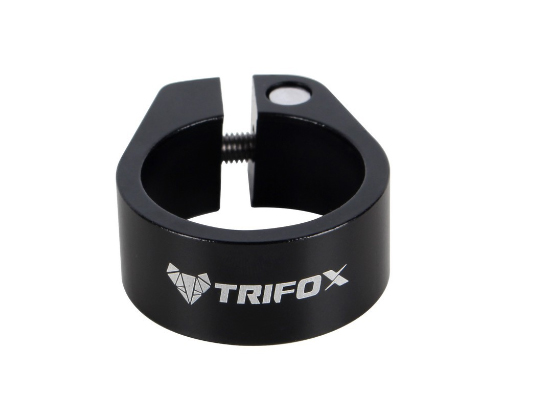
The seatpost clamp may seem like a small component in the grand scheme of a bicycle, but its role is crucial. It secures the seatpost at the desired height, ensuring that your ride is both comfortable and stable. Whether you're upgrading, replacing, or setting up a new bike, choosing the right seatpost clamp, like the Trifox seatpost clamp SC35, and installing it correctly is key. Here's how to do it. Understanding Seatpost Clamps Seatpost clamps come in various designs and materials, each offering different benefits. Aluminum alloy, for example, is praised for its blend of lightweight and durability, making it a popular choice among cyclists. When selecting a seatpost clamp, consider factors such as material, diameter compatibility, and locking mechanism (bolt-on or quick-release). Selecting the Right Size The most critical step in choosing a seatpost clamp is ensuring it matches the diameter of your bike's seat tube (not the seatpost itself). This measurement is crucial because an incorrect size will either not fit or fail to secure the seatpost properly. For instance, the Trifox seatpost clamp SC35 is designed for a specific seat tube diameter, so verifying compatibility with your bike frame is essential. Material and Design Opt for a seatpost clamp made from durable materials like aluminum alloy, which provides an excellent balance between strength and weight. The design also plays a role in the overall aesthetics of your bike and the ease of installation. Some clamps feature a quick-release mechanism for easy adjustment, while others use a bolt-on design for a more secure hold. Installation Steps Once you've selected the appropriate seatpost clamp, installing it correctly ensures it performs its function without damaging your bike. Here are the general steps, taking the Trifox seatpost clamp SC35 as an example: Measure for Compatibility: Double-check the diameter of your bike's seat tube to ensure the clamp fits perfectly. Clean the Area: Before installation, clean the seatpost and the inside of the seat tube to remove any dirt or debris. This promotes a secure fit and prevents slippage. Position the Clamp: Slide the seatpost clamp onto the seatpost, then insert the seatpost into the seat tube to your desired height. Adjust the positioning of the clamp so it sits flush against the top of the seat tube. Tighten Securely: If your clamp uses a bolt-on mechanism, like the SC35, use an Allen key or wrench to tighten it. Ensure it's snug but avoid overtightening, as excessive force can damage the clamp or the frame. Check for Stability: After tightening, gently try to move the seatpost with your hands. If there's no movement, you've secured it properly. If it moves, tighten the clamp a bit more and retest. Final Thoughts A well-chosen seatpost clamp, such as the Trifox seatpost clamp SC35, enhances your cycling experience by ensuring your seat stays at the perfect height and angle for your riding comfort and efficiency. Remember, the key to a successful selection and installation lies in knowing the correct size for your bike, choosing quality materials, and following the proper installation steps. By paying attention to these details, you can enjoy a stable and comfortable ride, whether you're navigating city streets or embarking on off-road adventures. Remember, the small components make a big difference in the performance and enjoyment of your bike, so choose wisely and install carefully.

In the world of cycling, every detail counts towards achieving the perfect ride. From the frame of your bike down to the accessories, like a bottle holder, each component plays a vital role in enhancing your cycling experience. Today, we're focusing on a seemingly small but significantly impactful accessory: the super light bike bottle holder. Specifically, we'll guide you through choosing and installing a Trifox Bike Bottle Holder, known for its high-quality goods at affordable prices. Why Choose a Super Light Bike Bottle Holder? Hydration is key to maintaining performance and endurance during rides, making easy access to your water bottle essential. A super light bike bottle holder not only ensures that your drink is always within reach but also contributes to the overall lightweight setup of your bike. Reducing weight where possible can lead to a more enjoyable ride, whether you're climbing steep hills or racing down country lanes. Selecting the Right Bottle Holder When it comes to selecting a bottle holder, there are several factors to consider: Material: Carbon fiber bottle holders, such as the CBC100 and CBC200 offered by Trifox, are incredibly lightweight and durable. They provide a secure grip on your bottle, ensuring it stays in place during bumpy rides, all while contributing minimally to the weight of your bike. Compatibility: Ensure the bottle holder fits the size of your bike's frame and is compatible with the diameter of your bottles. Most holders are designed to accommodate standard sizes, but it's always best to check. Ease of Access: Consider how easily you can retrieve and replace your bottle while riding. The design should allow for quick access without distracting you from the road ahead. Aesthetics: While not as crucial as functionality, choosing a bottle holder that complements the look of your bike can enhance your overall satisfaction. Trifox Bike Bottle Holder: A Top Choice Trifox offers a range of bike accessories, including the CBC100 and CBC200 carbon bike water bottle cages, which stand out for their quality and affordability. These bottle holders are crafted from carbon fiber, offering an optimal balance of strength, durability, and lightness. Plus, with Trifox's commitment to providing high-quality goods at competitive prices, you're getting great value for your investment. Installing Your Trifox Bike Bottle Holder Installation is straightforward and requires only a few tools, such as a hex wrench. Follow these steps for a successful setup: Locate the Mounting Points: Most bikes have pre-drilled holes in the frame for attaching a bottle holder. Locate these on your bike—they're usually found on the down tube or the seat tube. Position the Bottle Holder: Hold the Trifox bottle holder against the mounting points to determine the correct orientation. Ensure it's positioned for easy access while riding. Secure the Holder: Use the screws provided with your Trifox bottle holder, and a hex wrench, to attach the holder to the frame. Tighten the screws until the holder is securely in place but be careful not to overtighten and damage the frame or holder. Test the Fit: Once installed, test the fit by inserting a water bottle into the holder. It should slide in easily and stay secure even when you shake the bike gently. Enjoying the Benefits With your Trifox bottle holder installed, you'll enjoy the benefits of having a reliable, lightweight solution for staying hydrated on your rides. Not only does it fulfill a practical need, but it also adds a touch of style to your bike, thanks to its sleek carbon fiber construction. Conclusion Choosing and installing a super light bike bottle holder is a simple yet effective way to enhance your cycling experience. With options like the Trifox CBC100 and CBC200, you can enjoy the benefits of advanced materials like carbon fiber, ensuring your rides are lighter, faster, and more enjoyable. Remember, staying hydrated is crucial for peak performance, and having a reliable, accessible bottle holder is key to achieving this. So, equip your bike with a Trifox bottle holder and elevate your cycling adventures. Whether you're a seasoned cyclist or just starting out, investing in the right accessories can make all the difference. And with free shipping for orders over $50 and secure payment options provided by Trifox, upgrading your bike has never been easier or more affordable.
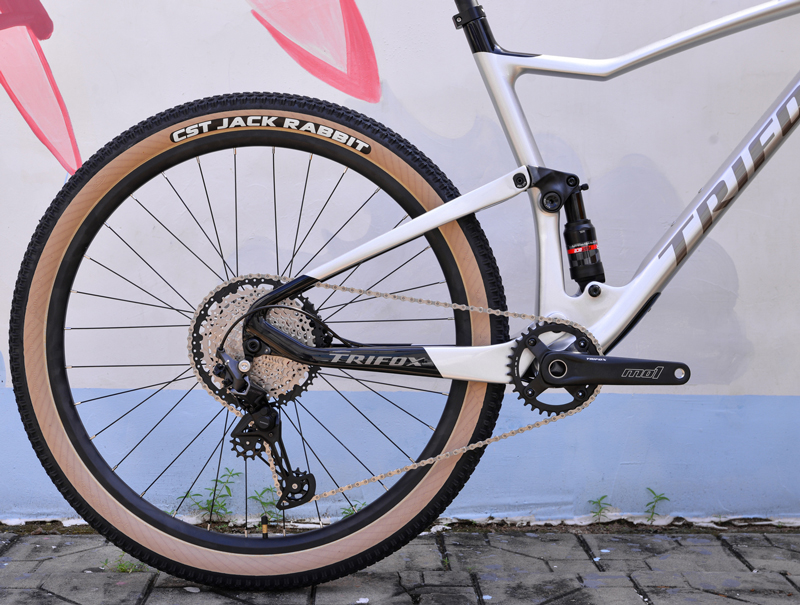
Mountain biking is an exhilarating sport that offers the freedom to explore nature, tackle challenging terrains, and push your limits. An essential component that significantly affects your mountain bike's performance is the freehub. It's responsible for driving your bike forward without pedaling and plays a crucial role in shifting gears. Ensuring your MTB freehub is compatible with your bike not only enhances your riding experience but also prevents mechanical failures. Here’s how you can check and match MTB freehub compatibility for your mountain bike. Understanding Freehubs Before diving into compatibility, it's crucial to understand what a freehub is. A freehub is part of the rear hub on your bike, housing the mechanism that allows the wheel to spin freely when you're not pedaling. It also includes the splines where the cassette (the set of gears) mounts. Identifying Your Freehub Type The first step in checking compatibility is identifying your freehub type. There are several types of freehubs, but the most common in mountain biking are Shimano, SRAM XD, and Micro Spline. Shimano: Known for its reliability, the Shimano freehub design has been a standard in the cycling world. It accommodates cassettes with up to 11-speeds on most models. SRAM XD: Designed for the SRAM XX1 groupset, the XD driver is lighter and allows for a more extensive range of gears, accommodating a 10-tooth smallest cog. Micro Spline: Introduced by Shimano for their 12-speed systems, Micro Spline enables the use of a 10-tooth smallest cog and features a new interface for better engagement and durability. To identify your freehub type, remove your rear wheel and cassette to expose the freehub. The shape of the splines and the mounting system can help you determine the type. Checking Compatibility Once you've identified your freehub type, the next step is to check its compatibility with your mountain bike. Here are key factors to consider: Cassette Compatibility: Ensure that your cassette matches the freehub type. For example, a Shimano cassette won't fit on an SRAM XD freehub without an adapter. Speed Compatibility: The number of speeds on your cassette should match the freehub's capability. Mixing different speeds (e.g., using an 11-speed cassette on a freehub designed for 9-speed) might work temporarily but can lead to poor shifting performance and increased wear. Hub and Frame Compatibility: The overall hub width must match your bike frame's specifications. Mountain bikes commonly use hubs that are 135mm, 142mm, or 148mm (Boost) wide. Ensure your freehub and hub assembly align with your frame's requirements. Matching Components After ensuring compatibility, matching your components is straightforward. When purchasing a new freehub or cassette, pay close attention to the specifications: For Shimano and Micro Spline: Look for the specific model that matches your drivetrain's speed and ensure it fits the hub's width.For SRAM XD: Verify that the freehub is labeled as XD-compatible and matches the speed and hub width of your setup. It's also worth considering the material and build quality of the freehub, as these can affect weight, durability, and performance. Professional Help If you're unsure about compatibility or how to proceed with swapping components, seeking professional help from a bike mechanic is advisable. They can provide valuable insights, recommend compatible parts, and even handle the installation for you. Conclusion Matching your MTB freehub with your mountain bike is crucial for optimal performance and durability. By understanding the different types of freehubs, checking compatibility with your bike's specifications, and carefully selecting matching components, you can ensure a seamless and enjoyable riding experience. Remember, when in doubt, consult a professional to avoid costly mistakes and ensure your mountain bike is in top condition for your next adventure.
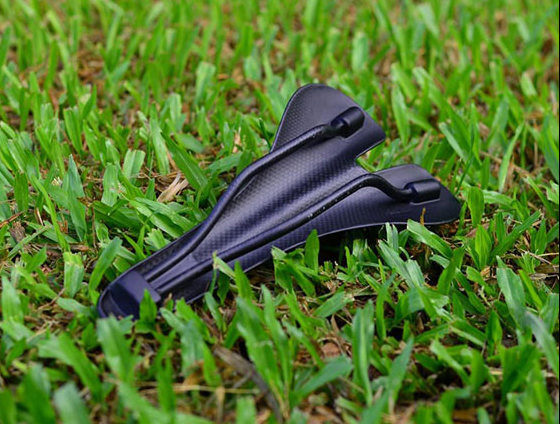
The saddle is arguably one of the most critical components of a bicycle, directly affecting your comfort, performance, and overall riding experience. With the myriad of options available in the market, choosing the perfect saddle can seem like a daunting task. However, when it comes to versatility and comfort, round saddles often emerge as the preferred choice for many cyclists across different disciplines. Understanding Round Saddles Round saddles are characterized by their rounded profile when viewed from the side. This shape provides a balanced distribution of pressure and supports the sit bones effectively, making them suitable for riders with a dynamic riding position or those who shift positions frequently. They're especially favored by road cyclists, mountain bikers, and endurance riders for their adaptability and comfort over long distances. Step 1: Assess Your Riding Style The first step in selecting the perfect saddle is to understand your primary riding style. Are you a road cyclist who values speed and aerodynamics? A mountain biker tackling rough trails? Or perhaps an endurance rider focused on comfort over long distances? Your riding discipline will influence your saddle choice, as different styles prioritize different features such as weight, cushioning, and shape. Step 2: Consider Saddle Width and Sit Bone Measurement One of the most crucial factors in saddle selection is width. A saddle that's too narrow won't support your sit bones properly, while one that's too wide can cause chafing and restrict leg movement. The key is to measure the distance between your sit bones and choose a saddle width that offers adequate support without compromising mobility. Most bike shops offer sit bone measurement services, or you can do it at home using a simple cardboard method. Step 3: Look for Quality Materials The materials used in the saddle's construction play a significant role in its durability, comfort, and weight. Leather saddles, for example, offer exceptional comfort and durability as they mold to your body over time. However, they require more maintenance and have a higher price tag. Synthetic materials are lighter and require less maintenance but might not provide the same level of comfort as leather. Additionally, consider the rail material—aluminum, steel, carbon fiber—to balance weight and strength according to your needs. Step 4: Evaluate Padding and Cutouts The right amount of padding in a saddle can make a significant difference in comfort. Generally, a firmer padding is preferable for longer rides and competitive cycling, as it provides better support. For casual riders or those who prefer softer support, a saddle with more cushioning might be more comfortable. Additionally, some round saddles come with cutouts or pressure relief channels designed to reduce pressure on sensitive areas, which can be a game-changer for some riders. Step 5: Test Before You Buy Perhaps the most important advice when selecting a saddle is to test it before making a commitment. Many bike shops offer demo saddles that you can try on your bike for a few days. Take advantage of these opportunities to get a real feel for how the saddle performs on the road or trail. Pay attention to any discomfort, pressure points, or mobility issues during the test period. Conclusion Selecting the perfect round saddle for your riding style and comfort is a personalized process that requires consideration of several factors, including riding discipline, sit bone width, material preferences, and individual comfort needs. By following the steps outlined above, you're well on your way to finding a saddle that not only enhances your riding experience but also supports your performance goals and comfort needs. Remember, the ideal saddle is one that you barely notice because it fits so well with your body and riding style. Don't be afraid to spend time testing different models and asking for advice from experienced cyclists or professionals at your local bike shop. After all, a well-chosen saddle is an investment in countless hours of enjoyable and comfortable riding.
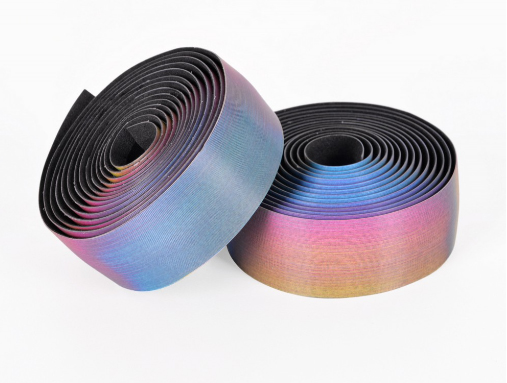
Whether you're an avid time trialist, a triathlete, or simply a cycling enthusiast looking to optimize your road bike's aerodynamics, aero bars are an essential component of your setup. However, the benefits of aero bars in terms of speed and aerodynamics can be offset by discomfort and poor grip if not properly outfitted with the right bar tape. Selecting and wrapping bar tape for aero bars is thus crucial for enhancing both comfort and grip during rides. Selecting the Right Bar Tape Material Matters: The first step in selecting bar tape for aero bars is considering the material. Options typically include synthetic materials, cork, and silicone. Synthetics offer durability and a wide range of colors and patterns, while cork provides natural vibration damping qualities for increased comfort. Silicone tape is relatively new but is gaining popularity for its tackiness and ability to be re-wrapped without leaving residue. Thickness and Cushioning: Aero bar setups benefit from tape that provides adequate cushioning without adding unnecessary bulk. Thicker tapes offer better vibration absorption, which can be crucial for long-distance rides, whereas thinner tapes give a more direct feel of the bars. Consider your personal preference and the type of riding you do most often when choosing the thickness. Texture and Grip: Look for tape with a texture that ensures a secure grip even when wet. This is particularly important for aero bars, where maintaining control in an aerodynamic position is key. Tapes with a tacky surface or textured pattern can offer improved grip compared to smoother options. Wrapping Your Aero Bars Preparation: Begin by cleaning your aero bars thoroughly to remove any dirt, grease, or old adhesive. Ensure the surface is dry before starting to wrap. Starting Point: Decide whether you want to start wrapping from the ends of the aero bars moving towards the center or vice versa. Starting from the ends can help secure the tape more effectively, especially if the tape comes with adhesive backing. Wrapping Technique: When wrapping, pull the tape tightly enough to prevent wrinkles or bubbles but not so tight as to stretch or tear the tape. Overlap each wrap by about one-third of the tape's width for even coverage. For aero bars, you may need to cut the tape into shorter lengths or strips to navigate complex shapes or tight bends effectively. Finishing Touches: Once you reach the end of your wrap, cut the tape at an angle to create a neat finish. Use electrical tape or the finishing tape provided with your bar tape to secure the end. Some cyclists also use a small amount of super glue or similar adhesive under the final wrap for extra security. Bar End Plugs: Insert bar end plugs to secure the tape at the ends of the bars. For aero bars, you might not use traditional bar end plugs, but ensuring the tape's end is securely fastened is still important. Conclusion Wrapping bar tape around aero bars might seem like a minor detail, but it's a critical aspect of bike setup that can significantly impact your comfort and performance. By selecting the right tape and applying it with care, you can enhance your grip, control, and overall riding experience. Remember, practice makes perfect, so don't be discouraged if your first attempt isn't flawless. With time and patience, you'll be able to achieve a professional-looking wrap that complements your aero setup perfectly.
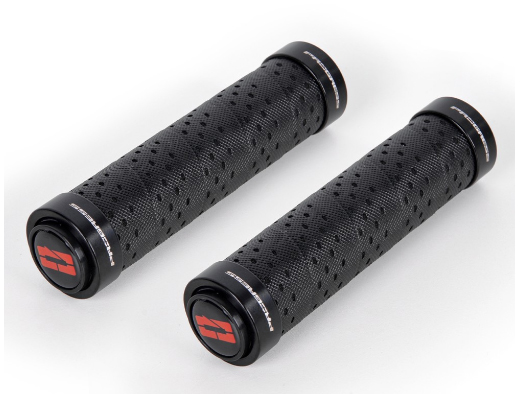
Mountain biking, particularly the enduro discipline, demands not only skill and endurance but also the right equipment to tackle demanding trails. Among the most crucial components are the grips, which serve as your primary contact point with the bike. They significantly influence your control, comfort, and overall riding experience. With countless options on the market, choosing the best enduro mountain bike grips can seem daunting Understanding Enduro Mountain Biking Enduro mountain biking is characterized by diverse terrains, including steep descents, technical sections, and challenging climbs. It requires equipment that offers a blend of performance, durability, and comfort. Grips, in particular, need to provide excellent control and vibration damping to handle rough trails while minimizing hand fatigue. Key Features to Consider When searching for the best enduro mountain bike grips, several features stand out as particularly important: Grip Material: Most enduro grips are made from rubber compounds that offer a balance between softness for comfort and firmness for durability. Some may include dual or triple compounds for optimized performance. Texture and Pattern: The texture should provide sufficient grip without being abrasive to your hands. Look for patterns that enhance grip in wet conditions and reduce slippage. Diameter and Length: The grips should fit your hands comfortably. Riders with larger hands may prefer thicker grips for better control, while those with smaller hands might find thinner grips more comfortable. The length should accommodate your hand size and riding style. Shock Absorption: Vibration damping is crucial in enduro riding to reduce fatigue and increase control. Look for grips with features like gel inserts or specific rubber compounds designed to absorb shock. Lock-On Mechanism: Lock-on grips feature a clamp that secures them to the handlebar, preventing twisting or slipping during aggressive riding. While slightly heavier, they are highly recommended for enduro riding for their reliability. Top Picks for Trifox Mountain Bike Grips While I can't reference specific products, several brands and models have earned reputations for excellence in the enduro scene. Brands like Trifox produce grips that are frequently praised for their quality, comfort, and performance. Installation Tips Proper installation is key to getting the most out of your grips. For lock-on grips, ensure the clamps are evenly tightened to the manufacturer's specified torque. For slip-on grips, a bit of hair spray or rubbing alcohol can help slide them onto the bar and then keep them in place once dry. Personal Preference and Trial Ultimately, the best enduro mountain bike grips for you come down to personal preference. Factors like hand size, sweat production, and specific riding conditions play significant roles in what makes a grip ideal. Don't hesitate to try different models to find what works best for you. Many riders find that what feels good in the shop may feel different on the trail, so testing them in real conditions is invaluable. Conclusion Finding the best enduro mountain bike grips is about balancing factors like material, comfort, grip, and vibration damping to suit your specific needs. Considering the demands of enduro riding, investing time in selecting the right grips can significantly enhance your control and enjoyment on the trails. Remember, the best grip is one that you don't notice because it seamlessly supports your riding, allowing you to focus on the trail ahead.
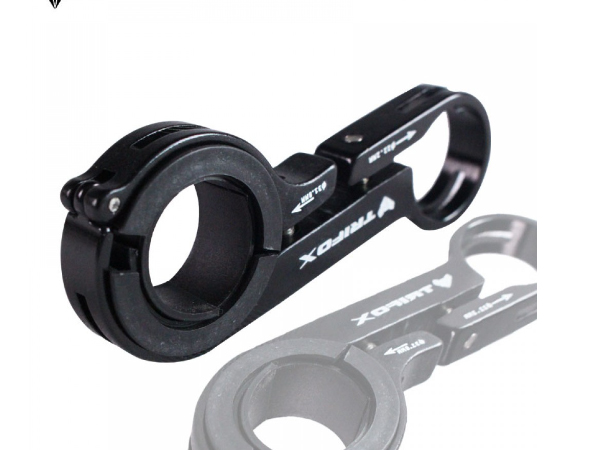
Cycling is not just about speed, endurance, or exploring new trails; it's also about comfort. A comfortable riding position can significantly enhance your biking experience, whether you're commuting, touring, or enjoying a leisurely ride in the park. One often overlooked component that can dramatically improve your comfort is a bike fork stem extender. This simple yet effective accessory allows you to adjust the height of your handlebars, promoting a more upright and comfortable riding posture. The Importance of Proper Bike Fit Before diving into the specifics of fork stem extenders, it's crucial to understand the importance of proper bike fit. A bike that fits well will not only be more comfortable but also more efficient and safer to ride. When your bike doesn't fit correctly, you may experience discomfort, fatigue, and even pain, which can discourage you from cycling. Adjusting the height of your handlebars with a stem extender can be a game-changer for achieving the perfect fit. What is a Bike Fork Stem Extender? A bike fork stem extender, also known as a steerer tube extender, is an accessory that fits between your bike's existing fork steerer tube and the stem. It effectively raises the stem and handlebars, allowing for a more upright riding position. This adjustment can alleviate pressure on your hands, wrists, and shoulders, leading to a more comfortable and enjoyable ride. Choosing the Right Stem Extender When selecting a stem extender, consider the following factors: Compatibility: Ensure the extender is compatible with your bike's fork and stem dimensions. Most extenders will specify the compatible steerer tube and stem diameters. Material: Aluminum alloy is a common material for stem extenders, offering a good balance between strength, weight, and cost. Height Adjustment: Look for an extender that offers the amount of height adjustment you need. Some extenders provide a range of adjustment options, while others are fixed-height. Brand and Quality: Choose a reputable brand known for producing quality bike components. Higher-quality extenders will be more durable and provide a more secure fit. Installation Guide Installing a bike fork stem extender is a straightforward process that requires basic tools and mechanical skills. Here's how to do it: Gather Tools: You will need a set of Allen wrenches and, optionally, a torque wrench. Remove Existing Stem: Loosen the bolts that clamp the stem to the steerer tube and remove the stem. Keep the spacers (if any) in the same order for reassembly. Install the Stem Extender: Slide the stem extender onto the fork's steerer tube. If your extender comes with its own spacers, follow the manufacturer's instructions on how to use them. Reattach the Stem: Place the stem (and any original spacers) onto the top of the extender. Align the stem with your front wheel for straight steering. Secure the Bolts: Tighten the stem's clamp bolts onto the extender. If you're using a torque wrench, follow the manufacturer's recommended torque settings to avoid over-tightening. Adjust Handlebar Height: Use the extender's adjustment mechanism (if available) to fine-tune the handlebar height to your preference. Ensure everything is tight and secure before proceeding. Safety Check: Perform a thorough check to ensure all bolts are tight and the handlebars and stem do not move independently of the bike. Test the bike in a safe area to ensure the adjustments feel comfortable and secure. Enjoy Enhanced Riding Comfort With your bike fork stem extender installed, you're ready to enjoy a more comfortable riding position. Take some time to adjust to the new setup, as it may feel different initially. Don't hesitate to make further adjustments to the handlebar height until you find the perfect fit for your riding style and comfort preferences. Conclusion A bike fork stem extender is a simple yet effective way to enhance your cycling comfort by allowing for a more upright riding position. By following the steps outlined in this guide, you can easily choose and install a stem extender, transforming your riding experience. Remember, comfort is key to enjoying your rides, so invest in adjustments that make your bike fit you better. Happy cycling!
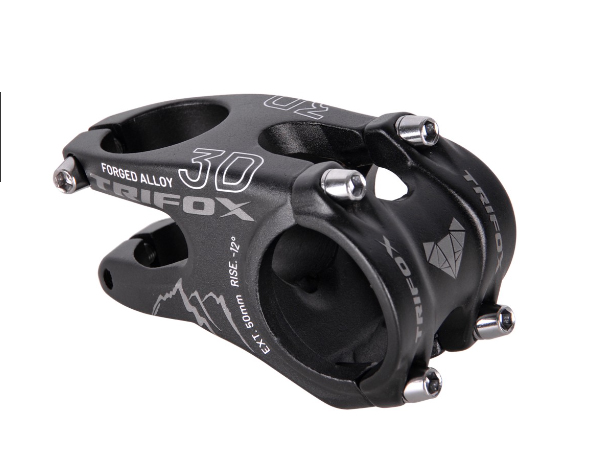
Cycling, whether for leisure, fitness, or commuting, demands more than just pedaling effort and endurance; it requires a bike that fits your body to ensure comfort, efficiency, and injury prevention. One critical component in achieving the perfect bike fit is the handlebar stem, and adjustable handlebar stems offer a versatile solution to meet individual needs. Understanding the Importance of a Proper Fit A properly fitted bike can dramatically improve your riding experience, making each ride more enjoyable and efficient. It can also reduce the risk of discomfort and repetitive strain injuries, which are often caused by poor posture or excessive reach to the handlebars. An adjustable handlebar stem allows you to fine-tune your handlebar height and reach, ensuring optimal comfort and control. Choosing the Right Adjustable Handlebar Stem When selecting an adjustable handlebar stem, consider the following factors to ensure you get the right one for your needs: Compatibility: Ensure the stem fits your bike's fork steerer tube and handlebar diameter. Most stems will specify the compatible dimensions in millimeters. Adjustment Range: Look for a stem with a wide range of adjustment angles. This feature will allow you to experiment with different positions to find what works best for you. Material: Adjustable stems are typically made from aluminum alloy, offering a good balance between weight, strength, and cost. Some high-end models may incorporate carbon fiber or titanium for reduced weight and increased stiffness. Ease of Adjustment: Consider how easily the stem can be adjusted. Some models require tools for adjustment, while others may offer tool-free options for on-the-go changes. Brand and Reviews: Opt for reputable brands known for quality cycling components. Reading reviews from other cyclists can also provide valuable insights into a stem's performance and durability. Tools You'll Need for Installation Before you begin the installation process, make sure you have the following tools: Allen wrenches (commonly 4mm, 5mm, and 6mm sizes) Torque wrench (optional but recommended) Grease (for threaded parts) Install the New Stem: If your adjustable stem has a removable faceplate, align the handlebars with the stem and attach the faceplate, loosely screwing in the bolts by hand. For stems without a removable faceplate, slide the stem onto the steerer tube to the desired height, aligning it with the front wheel.Adjust to the Desired Angle: Loosen the angle adjustment bolts slightly to set the stem to your preferred angle. This step might require some trial and error to find the perfect position. Secure the Stem: Once you've found the ideal angle and height, tighten the stem bolts securely. If you're using a torque wrench, adhere to the manufacturer's recommended torque settings to avoid over-tightening, which can damage the components. Reattach the Front Wheel: Ensure that the wheel is properly aligned and secured. Safety Check: Before riding, double-check all bolts for tightness and ensure that the handlebars are securely fastened and do not move when force is applied. Fine-Tuning Your Fit After installing your new adjustable stem, it's crucial to test ride your bike in a safe area. Pay attention to how the new setup feels and make any necessary adjustments. Fine-tuning your bike fit is an ongoing process that may require several rides to get right. Conclusion An adjustable handlebar stem is a valuable component for cyclists looking to achieve a custom fit without the need for professional bike fitting services. By following this guide, you can confidently choose and install an adjustable stem, enhancing your riding comfort and performance. Remember, comfort on the bike is key to enjoying your rides, so take the time to adjust your setup until it feels just right.

Building a road bike that can withstand the test of time and terrain is a dream for many cycling enthusiasts. With the emergence of carbon as a preferred material for bike frames, achieving this goal has become more accessible than ever. Carbon road bike frames offer an unparalleled combination of strength, durability, and lightweight performance, making them ideal for creating a road bike that excels in both endurance and speed. 1. Start with a High-Quality Carbon Frame The heart of any durable road bike is its frame. Carbon road bike frames are known for their exceptional strength-to-weight ratio, vibration damping properties, and corrosion resistance, which contribute to their longevity and resilience against various terrains. When selecting a carbon frame, consider factors such as frame geometry, which influences the bike's handling and comfort, and the carbon layup process, which affects the frame's overall strength and stiffness. 2. Choose the Right Components The components you select to complement your carbon frame significantly impact your bike's performance and durability. Wheels: Look for carbon or high-quality aluminum wheels that offer a balance between aerodynamics, weight, and strength. A robust set of wheels can handle high speeds and rough terrains without compromising on performance. Drivetrain: Opt for a reliable drivetrain system that offers smooth shifting and durability. Systems from reputable brands can withstand thousands of miles of riding with minimal maintenance. Brakes: Whether you choose rim brakes or disc brakes, ensure they provide consistent stopping power in all conditions. Disc brakes, in particular, offer superior performance in wet and muddy conditions, adding to the bike's versatility. Tires: Select tires that match your riding conditions. For a road bike that withstands various terrains, consider slightly wider tires with puncture-resistant technology for added durability and grip. 3. Pay Attention to Detail Small details can make a big difference in building a road bike that lasts. Cables and Housing: Use high-quality cables and housing to ensure smooth operation of brakes and gears. Regularly inspect and replace them to prevent performance degradation over time. Bearings: Invest in sealed bearing hubs, bottom brackets, and headsets to protect against dirt, dust, and moisture, ensuring smooth rotation and reducing wear. Handlebar Tape: Choose durable and comfortable handlebar tape to absorb vibrations and improve grip, enhancing control and reducing fatigue on long rides. 4. Regular Maintenance and Upkeep Even the strongest road bike requires regular maintenance to stay in top condition. Cleaning: Regularly clean your bike to remove dirt and grime that can wear down components. Pay special attention to the drivetrain and braking surfaces. Lubrication: Keep the chain and other moving parts well-lubricated to reduce friction and prevent premature wear. Inspection: Periodically inspect your bike for signs of wear or damage, including checking the frame for cracks, testing the brake pads for wear, and ensuring all bolts are tightened to the correct specifications. 5. Customization for Comfort and Efficiency Customizing your bike to fit your body and riding style can enhance comfort and efficiency, contributing to the bike's longevity by reducing strain on both the rider and the bike. Fit: Consider getting a professional bike fit to adjust the saddle height, handlebar position, and stem length to your measurements, improving riding comfort and efficiency. Accessories: Add accessories like mudguards or fenders to protect against road spray, and consider mounting options for water bottles and tool kits for longer rides. Building a strong road bike that withstands the test of time and terrain requires careful selection of materials and components, with a carbon road bike frame providing an excellent starting point. By combining high-quality components with regular maintenance and personalized adjustments, you can create a durable, efficient, and comfortable road bike ready for whatever adventures lie ahead. Remember, the key to a long-lasting road bike lies not just in its construction but also in how well it is cared for and maintained over the years.

















